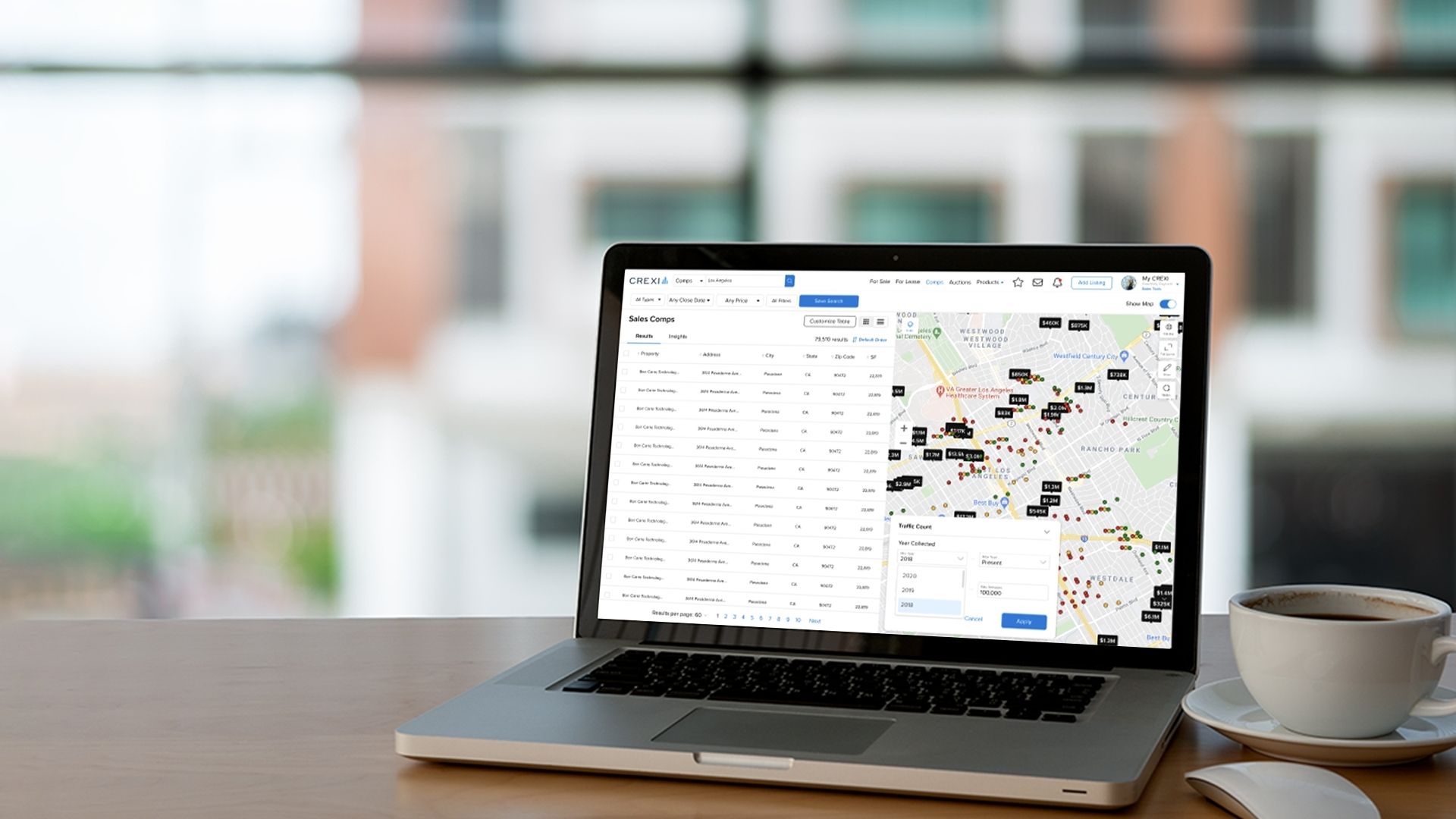| | | | | | | Presented By Crexi | | | | Axios Markets | | By Matt Phillips and Emily Peck · May 13, 2022 | | 🚨 While many of you were sleeping, Elon Musk tweeted that the Twitter deal was "temporarily on hold." It's unclear what that means, but it "will ignite havoc in the tech and financial worlds," Dan Primack and Sara Fischer write. 🙀 Uh, did we mention that it's Friday the 13th. Today's newsletter, edited by Kate Marino, is 1,092 words, 4.5 minutes. | | | | | | 1 big thing: ARMs are back, but this time they're different |  Data: Mortgage Bankers Association; Chart: Axios Visuals They're baaccck. Adjustable-rate mortgages, which start out with a relatively low rate that jumps after a certain time period, comprised nearly 11% of mortgage applications last week, the highest level since 2008, according to data from the Mortgage Bankers Association, Emily writes. Why it matters: This is another way the Federal Reserve's rate hikes are changing markets and behavior. Flashback: Until recently, 30-year fixed mortgage rates were super low. It didn't make sense to take on a riskier adjustable loan, or ARM. Now with rates on fixed loans to around 5.5%, and ARMs often coming in at more than a point less, borrowers are going for it. Now, you might be thinking: Oh no, I remember those loans from the housing bubble that led to the financial crisis, this seems ominous! But, it's not like that. - Back then, many subprime borrowers took out interest-only ARMs with super-low teaser rates that would skyrocket to unaffordable levels. Many couldn't pay and wound up in foreclosure.
- Regulations and underwriting standards have tightened since then, prohibiting that kind of stuff. Today's ARMs are far less, to put it technically, bonkers. "Very different animals," said Len Kiefer, deputy chief economist at Freddie Mac.
A popular ARM now is the 5/6, said Greg McBride, chief financial analyst at Bankrate.com. It's a fixed rate for five years, then adjusts every six months after that. - And those adjustments are subject to caps — like the 2/1/5 that can't increase more than 2 points for the first round, then a max of 1 point after that, and can't go up more than 5 points over the life of the loan.
- Plus, borrowers taking out ARMs now typically have high incomes and strong credit ratings. They can afford the higher 30-year rates, but prefer the savings on the ARM, he said.
"It will be time to worry if loan standards begin to relax and anyone who can fog a mirror is able to get a mortgage. That is not what is happening now." What to watch: "Is this just a blip?" wondered Freddie's Kiefer. The move to ARMs could be a last-ditch effort to preserve affordability, he said. |     | | | | | | 2. Catch up quick | | ⬆️ California will raise the minimum wage to $15.50 due to inflation next January. (Axios) 👀 Black economists make up only 1.5% of Fed staff. (Axios) ❓Businesses face benefits questions amid Roe uncertainty. (Axios) |     | | | | | | 3. Contagion |  Data: CoinGecko; Chart: Axios Visuals Following the collapse of the Terra stablecoin on Wednesday, selling pressure briefly forced a much larger stablecoin — known as Tether — to fall below $1 early Thursday. It's the latest sign of pressure on the supposedly safe coins at the heart of the crypto economy, Matt writes. Why it matters: While Tether reclaimed its $1 value, the disconnect has focused minds even more sharply on what seems like the growing fragility of the crypto markets in recent days. Catch up fast: Earlier this week, TerraUSD (also known as UST), the world's fourth-largest stablecoin, suddenly collapsed from its dollar peg. - Contagion then hit Tether — the world's largest stablecoin with a market cap of more than $80 billion — sending shockwaves through crypto world, and beyond.
- Around the same, prices for Bitcoin crashed to $25,000, before rebounding.
What we're watching: Whether crypto contagion will make the jump into the reality-based financial system. - As analysts from Fitch Ratings wrote this week, "Many regulated financial entities have increased their exposure to cryptocurrencies, [decentralized finance] and other forms of digital finance in recent months."
- More on that below.
|     | | | | | | A message from Crexi | | Inform better CRE decisions | | |  | | | | Crexi's CRE data hub, Intelligence, offers real estate professionals access to over 13 million sales comps and key market data. Why it's important: In an ever-changing CRE environment, it's essential to have as much market data as possible. Learn more about Intelligence. | | | | | | 4. Run! |  | | | Illustration: Shoshana Gordon/Axios | | | | It's not a bank run — but it's still a run. What happened to Tether (USDT) on Wednesday night is very similar to what happened to the Reserve Fund in 2008 — an event that worried regulators so much they stepped in with an emergency bailout of all money-market funds, Axios' Felix Salmon writes. Why it matters: If a $64 billion money-market fund posed a systemic risk in 2008, it stands to reason that an $81 billion stablecoin poses a systemic risk in 2022. The big picture: Stablecoins like Tether are a bit like money market mutual funds, in that, in principle, they both represent fractional ownership of a pool of safe assets. - If there are 64 billion Tethers, and Tether owns $64 billion in Treasury bonds and other money-like instruments, then Tether can credibly promise to pay $1 in cash to anybody redeeming one token — just like money-market mutual funds promised to pay $1 in cash to anybody redeeming one share.
- The catch: If a lot of people all try to redeem at the same time, then Tether (or the mutual fund) has to dump a lot of assets in a very short timeframe. Depending on the liquidity of the market in those assets, that might cause their price to fall significantly below its par value — or there might be no bid for them at all.
- Regulators worry that having safe paper trade at well below par would undermine confidence in the financial system.
Between the lines: In the case of Tether, there are two further problems. - If the USDT selling happens in the middle of the U.S. night, then there aren't any open markets where Tether can sell its assets to raise cash. But crypto markets, by their nature, are open 24/7. That disconnect can cause prices to fall sharply when U.S. markets are closed.
- No one's entirely sure what Tether owns, where it's held or whether it even covers the total amount of USDT in circulation. If there aren't enough assets to go round, then there's a strong incentive to get out first, at par, before the money runs out. In that sense, a run on Tether might resemble a traditional bank run.
The bottom line: Tether is largely unregulated. But if it's forced to sell tens of billions of dollars' worth of securities in a short amount of time, that could send massive repercussions through global money markets. |     | | |  | | | | If you like this newsletter, your friends may, too! Refer your friends and get free Axios swag when they sign up. | | | | | | | | 5. 🌽 Corn shoots up |  Data: FactSet; Chart: Axios Visuals While we were all obsessing over wheat prices, corn prices were shooting up, too, Emily writes. Why it matters: While the U.S. is largely unaffected by rising prices for wheat overseas, the corn story is different, said Rob Dongoski, EY agribusiness leader. - And this isn't about your corn-on-the-cob budget. This is the stuff that cows and chickens eat. Higher prices will push up already soaring beef and poultry prices.
State of play: Rising demand in China and plunging production in Ukraine — the world's fifth-largest corn producer — are helping drive the increase. - Consumption is expected to slightly exceed production over the next year, according to the USDA's May grain report.
|     | | | | | | A message from Crexi | | Better understand your CRE market | | |  | | | | Every CRE market is unique. Intelligence provides the data and analytics real estate professionals need to understand markets quickly and with confidence. The benefits: Access over 13 million sales comps, insights, map overlays, search tools and much more. Explore Intelligence. | | | | 🙌 A special thanks to Mickey Meece for copy editing today's newsletter, which was never, not once, temporarily on hold. |  | It's called Smart Brevity®. Over 200 orgs use it — in a tool called Axios HQ — to drive productivity with clearer workplace communications. | | | | | | Axios thanks our partners for supporting our newsletters. If you're interested in advertising, learn more here.
Sponsorship has no influence on editorial content. Axios, 3100 Clarendon Blvd, Suite 1300, Arlington VA 22201 | | | You received this email because you signed up for newsletters from Axios.
Change your preferences or unsubscribe here. | | | Was this email forwarded to you?
Sign up now to get Axios in your inbox. | | | | Follow Axios on social media:    | | | | | |











No comments:
Post a Comment